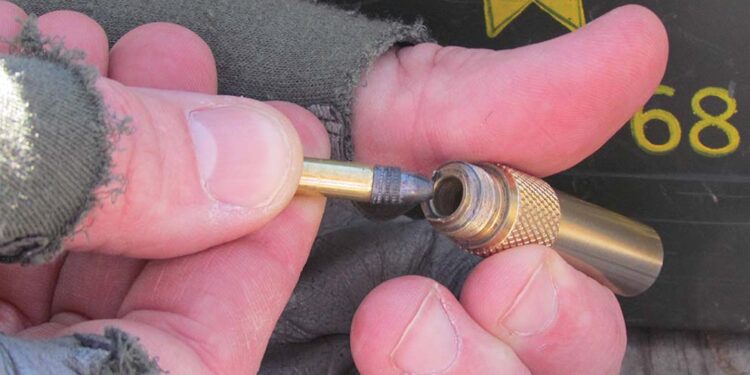By Will Dabbs, MD
Pen guns. The thought likely conjures up images of secret agents, special operations, and deadly subterfuge. At the very least, in this age and time, they bring to mind transfer taxes and paperwork. One company, however, for a time produced a line of pen guns that was reasonably priced and transferred like a conventional handgun. The resulting product was either an engineering work of art, a plaintiff’s attorney’s dream, or both.
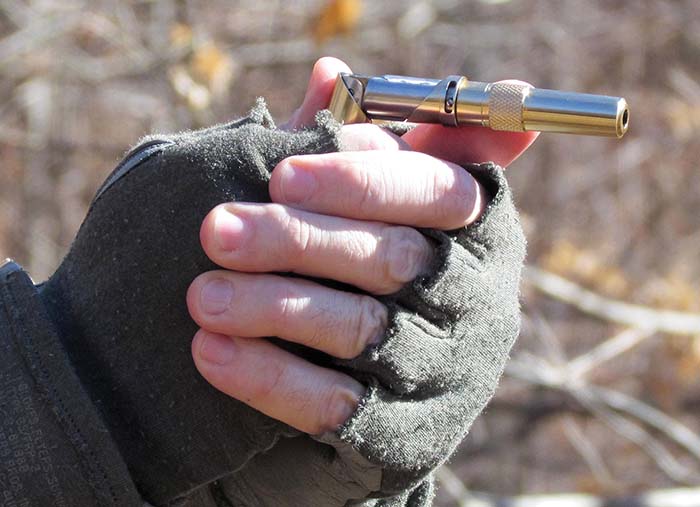
A Dark History
Stinger is a term that has been associated with pen guns for decades. The British Special Operations Executive (SOE) was established in July of 1940 under the ultimate command of Dr. Hugh Dalton, the English Minister of Economic Warfare. The mission of the SOE was to take the fight to the Nazis in the occupied territories whether that be repatriation of downed fliers, sabotage, or, on occasion, assassination. The SOE operated a weapons research facility out of Welywn Garden near London where engineers developed weapons for the SOE’s 5,000 clandestine operatives that were effective, transportable, and concealable. These weapons included some of the earliest effective suppressed firearms, collapsible crossbows, and guns designed to operate as parts of belts, gloves, pipes, or cigarettes. Designers at this facility also produced a variety of pen guns.
The typical pen gun of the era fired a 6.35mm cartridge and could still pass for a writing instrument in dim light. One particular version was common enough to be type-classified as the T-2 and fired a .22 short cartridge. This weapon was disposable and could be concealed in the palm of your hand.
The Military Armament Corporation, the same folks who brought us the MAC series of submachine guns designed by Gordon Ingram, produced pen guns that sported the name Stinger in the early 70s. Interestingly, their Stingers could be had with matching sound suppressors. These weapons were well-made and lethal though records of any operational use are understandably sketchy. The few Stingers that were sold commercially during that time went for $36 each new.
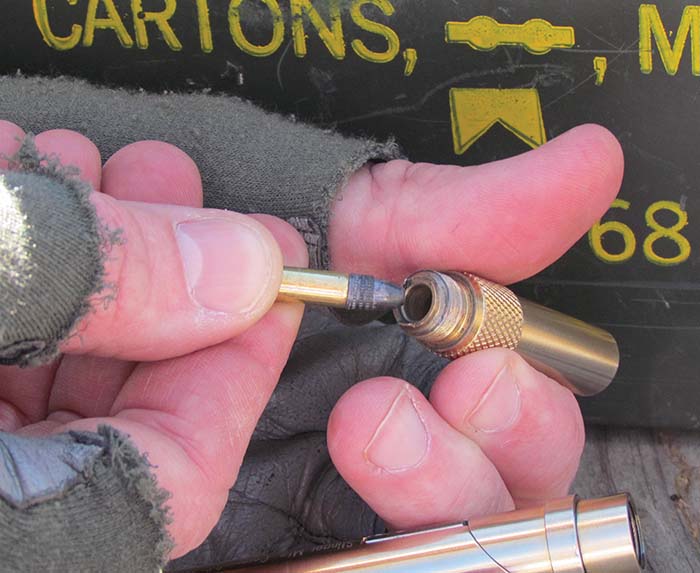
What Does ATF Think of All This?
Original Stinger pen guns fall under the purview of the National Firearms Act in the category of “Any Other Weapon,” a sort of catch-all heading that categorizes weapons such as cane guns, umbrella guns, and purpose-built handgun-sized shotguns. While the paperwork involved in purchasing one of these weapons is identical to that required to own a suppressor, machine gun, or short-barreled rifle or shotgun, the transfer tax is a paltry $5.
The more contemporary Stinger circumvents the NFA categorizations brilliantly. Originally marketed by the Stinger Manufacturing Company of Sault St. Marie, Michigan, today’s Stinger rides in your pocket just as would a linear writing instrument but deploys into a more familiar angular handgun shape prior to firing. The accompanying literature claims that the weapon can be deployed in about two seconds and actual hands-on experience has born that out.
It should be noted that I have a degree in Mechanical Engineering and have spent my entire adult life immersed in guns and similar mechanical contrivances. Despite this, and with the factory manual at my fingertips, it took me nearly an hour of fiddling to get to the point where I could consistently deploy, fire, recock, and stow my Stinger pen gun without frustrating myself. In their defense, however, the Stinger is the archetypal last-ditch weapon. The Stinger is the tool you use when the alternative is bare hands and foul language.
Deploying and firing the gun is not challenging and this process is fairly intuitive. However, if someone is trying to reload the piece tactically for a follow-up shot then something has obviously gone desperately wrong.
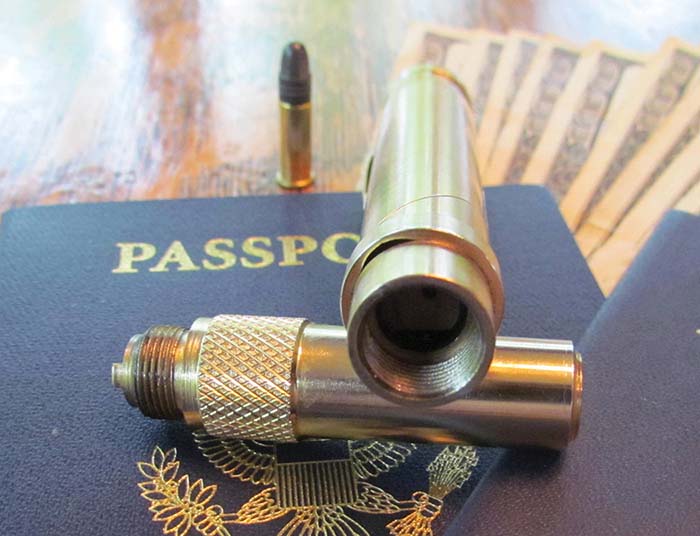
How Does It Shoot?
The rifled barrel of the Stinger is two inches long and the gun has no sights. No one will be shooting the Camp Perry matches with this rascal. However, the workmanship, fit, and finish on the piece are superb and one really would not want to be downrange from it in an up close and personal confrontation. Trigger pull is adequately crisp and positive though recoil is, believe it or not, a bit attention-getting even in .22 Long Rifle. I can consistently keep my rounds on a pie plate on a pleasant day at the range out to about ten feet. Considering the piece really is designed to be used at contact ranges this is adequate.
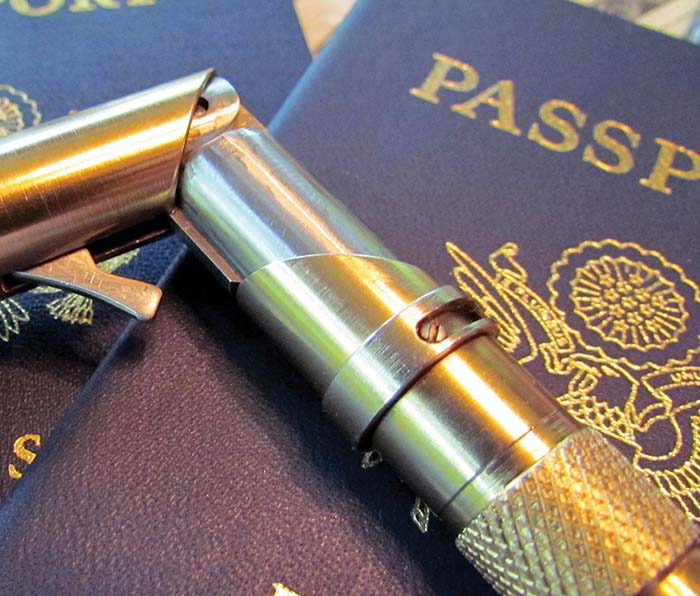
Just How Do You Make It Work?
The Stinger is legitimately elegant mechanically. As a safety mechanism it incorporates a floating breech that cams into position with manipulation of the safety ring. This mechanism only allows the firing pin to contact the cartridge when the pistol is deployed into its angular configuration and the safety ring is rotated. In practice this makes for an unusual manual of arms.
Loading is straightforward with a gun that is cocked and in its pen configuration. The operator simply unscrews the barrel, drops in a cartridge, and screws the barrel back in place. Deploying the weapon for firing is simple. Grasping the opposite ends of the gun the operator extends the two halves and pivots the toggle joint in its center before allowing the two halves to settle back into each other at a mechanically-determined angle due to spring tension within the body of the piece. This movement deploys the trigger, a simple flat steel appendage, from the body of the gun. This also engages a tab on the barrel that prevents its removal until the gun is retracted back into its linear pen configuration. The shooter then rotates the safety ring slightly clockwise as viewed by the firer (the only direction it will turn) until the ring finds its natural detent position. Pressure on the trigger then fires the gun.
At this point the barrel is locked in place and cannot be removed for reloading. This requires cycling the action twice to reset the safety, release the barrel for removal, stow the trigger, and recock the firing mechanism. While this is counter-intuitive, it does indeed require two complete iterations of this exercise to release the mechanism completely. As mentioned, it is complicated.
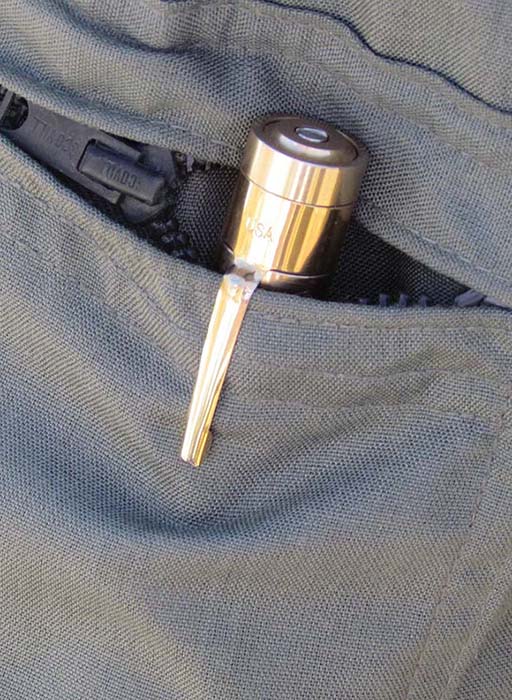
The Bottom Line
Anyone interested in acquiring one of these little marvels should do so with reasonable expectations. It is mechanically brilliant. Its designers built this device in such a way as to allow it to be sold in the U.S. as a conventional title I firearm while still facilitating open carry as though it was a writing instrument. It also incorporates sufficient mechanical safety features as to make it safe to carry loaded and retracted in one’s shirt pocket. Herein lies the problem. To design a weapon that will meet these requirements yet still have any hope of succeeding in today’s hyper-litigious environment makes it mechanically cumbersome. As such, it really is only an appropriate piece for the advanced shooter or collector who will take his time and study the mechanism.
Stingers can be tough to find these days. Originally produced in both .22 LR and .25 ACP versions, both have been out of production for some time. There have even been a couple of “sniper” versions produced with long barrels and telescopic sights. This sounds to me like the fruits of a gifted designer with some proper machine tools and too much free time.
Additionally, there was a fairly high profile incident wherein a rap artist who was said to be intoxicated at the time was playing with a Stinger at a party and accidentally killed himself. In a political environment wherein it is a definitive uphill struggle to convince anyone but the most ardent gun enthusiast that a pen gun of any sort may be legally owned and carried, this makes for some unique marketing challenges. For the right person with the right inclinations and a little patience, however, finding a Stinger at a gun show or local gun shop can add a useful and fascinating tool to the right collection.
| This article first appeared in Small Arms Review V17N4 (December 2013) |



